introduction
Temperature measurement and control play a vital role in today's social life. The existing temperature measurement technologies in the international and domestic markets cover security inspection, market, life, fire protection, scientific research and many other fields. Temperature measurement and control are widely used in industrial production, especially in important industrial fields such as petroleum, chemical, electric power, metallurgy, etc. Temperature measurement and monitoring is a very important part. In the traditional temperature measurement system, the temperature collector usually uses an analog temperature sensor. The analog signal is easily interfered during the transmission process, which affects the accuracy of the measurement. The analog signal is converted into a digital signal, and the A/D converter with higher precision is used. Generally, the price is expensive. For the shortcomings of the traditional system, combined with the research status at home and abroad on the temperature monitoring system, this paper has carried out a new design.
The intelligent temperature measurement system based on IoT technology and embedded technology realizes remote wireless mobile video surveillance system. Based on FS_S5PC100 development platform, Samsung's advanced Cortex-A8 core-based S5PC100 processor and wireless network card WI-FI are used as hardware. The carrier integrates technologies such as WLAN, embedded Linux and JSP technology, and adopts the versatility and ease of use of the program software to realize wireless video and intelligent temperature measurement system control and environmental information collection.
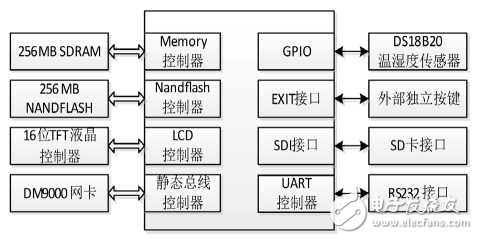
Figure 1 Platform hardware composition diagram 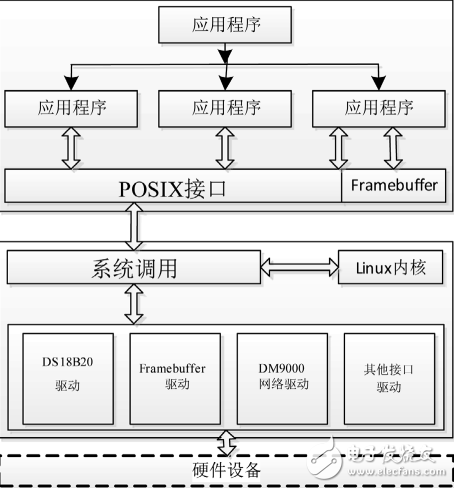
This paper designs an intelligent temperature acquisition system that requires temperature acquisition, temperature data storage, temperature data display, and network communication functions. Therefore, the interface to be designed by the platform is as follows:
The circuit board design temperature sensor acquisition interface 1 way, the temperature sensor uses DS18B20 one-wire communication interface; because the platform needs to store the data storage and need to store the local operating system code, it needs a stable storage solution, so the platform design NAND FLASH and SD Card-incorporated storage solution, in which NAND FLASH is mainly used to store local code, SD card is used to store collected data; the system needs to display the collected temperature and historical temperature in real time.
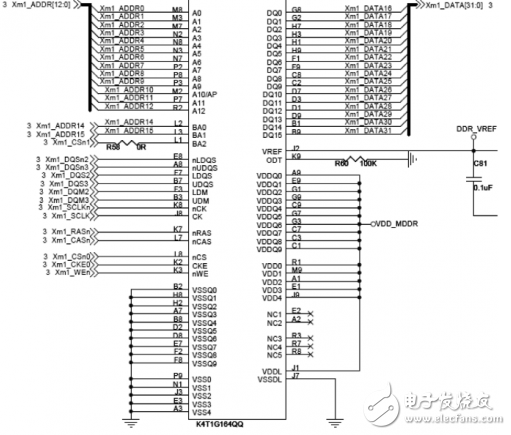
Figure 3 S5PC100 DDR2 SDRAM circuit schematic 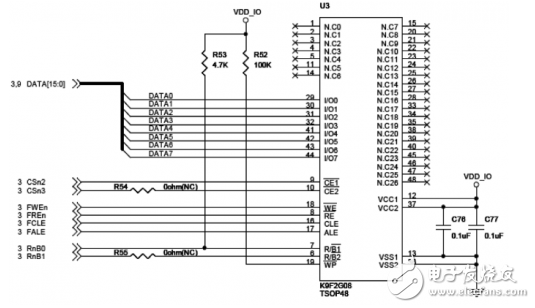
Figure 4 S5PC100 NandFlash circuit principle
Out, therefore, an integrated graphic display interface is required. The system uses a 24-bit TFT LCD interface circuit. The system integrates a 10M/100M adaptive Ethernet interface to meet the remote data acquisition function of the platform. To meet the temperature monitoring needs, the platform Integrated PWM PWM buzzer interface and one RS232 interface, RS232 interface can be connected to GPRS module. Debug expansion interface: The system should integrate 1 RS232 interface for debugging the system with the control terminal. The project design platform can realize the functions of timing temperature acquisition, display and temperature over-limit alarm. The main work flow is as follows:
1. The platform can collect temperature sensor data at regular intervals;
2. The collected temperature data is stored in the local database in chronological order;
3 . Each collection temperature is compared with the upper and lower limits of the set temperature. When the temperature exceeds the limit, a local alarm or a remote alarm signal can be issued. The local alarm signal is realized by the buzzer alarm sound, and the remote alarm signal can realize the SMS alarm through the external GPRS;
4 . The platform has remote data access and access to the local database over the network.
1.2 Platform hardware circuit module selectionAccording to the interface and functional requirements of the platform, the system is modularized according to the function division. The selection of its functional modules is as follows:
1.2.1 Platform Processor Unit
The platform needs to have functions such as temperature acquisition, large-capacity data storage, and network communication. Therefore, its processor portion has the ability to run file systems and network protocol clusters. The project proposes a solution based on ARM microcontroller as the core processor. ARM microcontroller can be used to carry the operating system and ability to handle complex protocol families. It reduces the risk of system design and improves the implementability and flexibility of the platform. .
The role of the ARM microcontroller in this system is mainly to collect temperature sensor temperature values ​​and implement storage and forwarding functions. The platform is designed using Samsung's advanced Cortex-A8 core-based S5PC100 processor. The S5PC100 processor features a 64-bit internal bus architecture that includes powerful hardware accelerators such as dynamic video processing, display control and scaling. Supports multiple formats of hardware codec: MPEF-1/2/4, H263/H264, CV-1, DivX. Its hardware acceleration features support real-time video conferencing and analog TV output, and supports NTSC and PAL mode HDMI. S5PC100 integrates 24BIT LCD interface, TVout interface, Camera input interface, 4-way serial port, SD card interface, SPI, 100M network port, USB2.0-OTG interface, USB Host interface, matrix button scanning interface, SPI communication, I2C communication. Hardware resources such as interfaces are suitable for embedded system applications with high performance requirements.
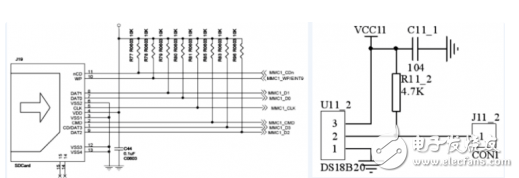
Figure 5 Schematic diagram of S5PC100 SD card circuit 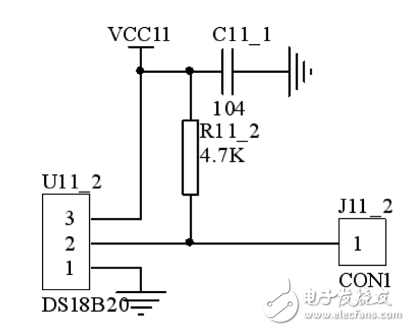
Figure 6 DS18B20 and interface schematic
In the platform, NAND FALSH, SD card, Ethernet and other complex interfaces are required. The S5PC100 has a powerful on-chip interface. The peripheral interface required by the platform can be realized by S5PC100 equipped with a simple external circuit, which improves the integration of system design. Therefore, the S5PC100 is very suitable for this system.
1.2.2 Temperature sensor
The platform adopts the DS18B20 networkable digital temperature sensor produced by DALL AS. Its wear resistance and impact resistance, small size, easy to use, and various packaging forms, it is suitable for digital temperature measurement and control in various narrow space devices.
The DS18B20 has a one-line communication interface, which requires only a single port line to realize the communication interconnection of the microcontroller, which greatly simplifies the external temperature sensor communication line. With a wide operating voltage and temperature measurement range, the DS18B20 performs temperature measurements in 750 milliseconds and achieves ±0.5°C measurement accuracy from -10°C to +85°C. The DS18B20 is internally integrated with a unique serial number that can be used to implement the DS18B20 networking via a bus. The DS18B20's simplified communication interface and convenient networking method reduce product design costs and increase system flexibility. Currently, the DS18B20 has been used in a variety of environmental control, equipment temperature monitoring measurements, and various temperature measurement systems.
1.3 The overall structure of the hardware circuit of the platformThe platform hardware composition is shown in Figure 1. The core modules are S5PC100, DD2 SDRAM, NAND FLASH, TFT LCD, SD card, RS232 interface can be directly extended through the S5PC100 internal peripheral interface, and the Ethernet interface is connected through the external static bus interface of S5PC100.
1.4 Selection of main software solutions for the platformIn a simple system, the software is generally designed in front and back-end programming mode. However, in a complex system, the software design method of the front-and-back-end mode cannot meet the requirements of the system. After the network protocol stack support, file system support, and multi-process support are required, The front and back-end software are difficult to implement the system's functional requirements due to the limitations of their hyper-loop programming methods. Therefore, complex embedded systems often support the embedded operating system. At present, commonly used embedded operating systems are VxWorks, WinCE, Linux, and so on. Here I chose Linux, which is an open source UNIX-like operating system. At present, after a long-term development, Linux has become the world's leading operating system, which can run on servers, mainframes and supercomputers. Due to the tailorability and portability of Linux, it is also widely used in embedded devices, such as consumer electronics. , switching equipment, industrial control, etc.
Linux has good multi-process and multi-thread support, supports multiple network protocols, has a rich file system, and its open source code features are supported by a wide range of developers.
The Linux operating system in this system can make full use of the mature network protocol cluster and modular clipping method in embedded Linux, which reduces the development difficulty of system software and improves the flexibility of system design.
1.5 System Software ArchitecturePlatform-designed software is designed in a layered and modular manner. Thanks to the embedded Linux operating system as a solution. Therefore, the software is divided into the application layer, the system layer, and the driver layer; the system layer software needs to complete the Linux migration on the operating system and the driver of each module; the application layer software needs to complete the software of the temperature acquisition module, the display module, and the network communication module. design. The software hierarchy diagram is shown in Figure 2.
2 system main interface hardware circuit design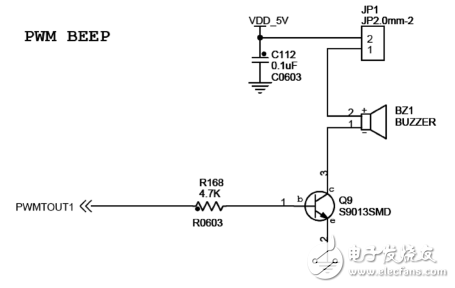
Figure 7 PWM interface buzzer circuit connection diagram
The target platform of the design needs to expand three types of storage media, namely DDR2 SDRAM, NAND FLASH and SD card circuits. The following describes the functions of the three storage media in the system.
(1) DDR2 SDRAM circuit
S5PC100 SDRAM controller passes to external 16-bit or 32-bit SDRAM
Provide interfaces to extend chip storage capabilities. This platform uses 2 pieces of K4T1G164
The 16-bit wide DD2 SDRAM consists of 32-bit memory with a capacity of 256MB, as shown in Figure 3.
(2) NANDFLASH circuit and SD card storage circuit Because the system needs to run Linux system, the system code is more complicated and needs
To a certain amount of memory to store the Linux operating system source code and applications, because the S5PC100 has a built-in NAND FL ASH controller, the platform uses K9F2G08 256MB NAND FLASH to directly interface with the S5PC100 NAND FLASH controller. The SD card can be directly connected via the S5PC100's built-in SDIO1 bus. The schematic diagram of the NAND FLASH circuit is shown in Figure 4, and the schematic diagram of the SD card is shown in Figure 5.
2.2 Temperature sensor interfaceThe platform is designed to use the DS18B20 one-wire temperature sensor interface. The temperature measurement of the temperature sensor DS18B20 is controlled by the GPIO pin interface of the S5PC100 processor, and the temperature is measured by the LCD screen. The schematic diagram is shown in Fig. 6.
2.3 temperature alarm circuitThis design uses software to handle alarms, uses passive buzzer to alarm, outputs PWM signal when the measured temperature exceeds the limit, and drives the buzzer to alarm. The circuit schematic is shown in Figure 7.
3 system software design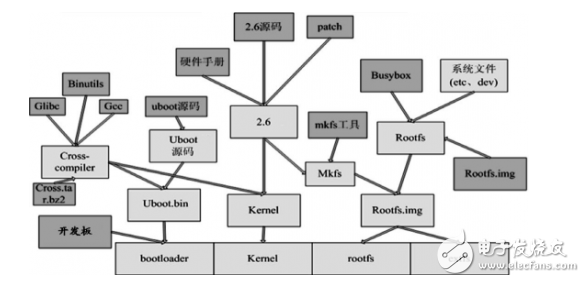
The complete embedded Linux system consists of bootloader, kernel, rootfs, etc.
3 basic parts. The bootloader is used to boot and load the operating system, the kernel is the Linux kernel program, and the rootfs is the file system, as shown in Figure 8.
3.1.1 Cross Compiling Environment
The embedded development system is limited by its own hardware and software resources, and cannot complete the local compilation of the code. Its development requires a cross-development environment on the host.
The cross development environment is a program environment that includes editors, compilers, connectors, debuggers, and libc libraries. When developing embedded Linux related software, the commonly used cross-development tool is the GNU toolchain. The development environment used by the host in the system is ubuntu12.04 operating system, the target kernel version number is standard linux-2.6.35, and the cross compiler used is arm-linux-gcc-4.5.1.
3.1.2 Bootloader program design
The Bootloader is a special program that runs before the operating system runs. It can complete the initialization of the platform hardware devices and complete the booting and debugging of the operating system. The bootloader relies on the CPU architecture. The Bootloader is generally divided into two phases according to functions. The first phase implements the initialization of the basic hardware circuit and prepares the environment for the operating system. In the platform, since the ARM microcontroller is used, the first stage needs to implement setting the processor into the management mode, turning off the processor interrupt and fast interrupt, setting the processor frequency, the high-speed bus frequency and telling the peripheral frequency. The CPU closes the MMU and the data cache, initializes the memory controller, and the code is automatically transferred to the memory by the memory, setting the temporary stack required for running the program, and clearing the BSS segment. In the second phase, the main implementation is to enter the interactive mode or the self-boot mode to implement the loading of the operating system. Generally, the initialization of the related hardware is implemented according to the requirements of the operating system and the hardware platform, such as initializing external devices such as GPIO, serial port, and network port. The kernel passes functions such as startup parameters.
3.1.3 Customization of the Linux kernel
Linux currently supports x86, ARM, MIPS and other processor architectures, supporting more than 3,000 platform types. In order to better promote the use of the processor, various ARM processor designers will add patches to Linux to enable the processor to run normally on the L i nu x line. The platform uses Linux-2.6.35 version. In the face of large-scale Linux source code, we need to tailor the Linux port.
The Linux source code adopts a modular organization mode, and the function of the Linux source code can be tailored by conditional compilation. However, the conditional compilation method is a function module, and the specific hardware driver and optimization need to be slightly modified on the source code. It is.
3.1.4 Establishment of the root file system
The root file system is where various tool software, library files, scripts, and configuration files are stored. Any file that is required to start these Linux systems can become the root file system. Linux supports jffs2, nfs, cramfs, yaffs2 and other file systems. The Ramdisk file system used in this system actually uses a portion of the memory as a hard disk to make the program run more efficiently. The collection of tools in the system is done using BusyBox, which combines many common minor versions of UNIX tools into a single executable. Such a collection can replace most common tools such as GNU fileuTIls, shelluTIls, etc. BusyBox provides a more complete environment for any embedded device.
3.2 Temperature sensor driver designIn Linux, in order to implement model abstraction and unified operation interfaces, device drivers hide the specific details of the device and provide users with a unified device interface. The Linux device driver runs in the kernel, completes direct hardware operations, device management, and provides a unified interface model to the user. Under Linux, devices are divided into three categories: characters, blocks, and network devices. The same device drivers are also divided into character drivers, block device drivers, and network device drivers. The device facing the character device is a streaming device, such as a mouse, a keyboard, etc.; the block device is for a device that needs to be randomly stored, and mainly includes a storage device such as a hard disk or an optical drive; wherein the DS18B20 is a character device.
The drive device is identified by a master device number and a minor device number in the character and block device. The major device number is used to identify the device type, and the secondary device number is used to identify the same device serial number. The character driver provides an interface abstraction to the user program via a pointer to the file_operaTIons structure.
Its kernel is defined as follows:
Struct file_operaTIons
{
Int (*read) (struct inode *inode, struct file *filp,char *buf,int count); /*device read*/
Int (*write) (struct inode *inode, struct file *filp,char *buf,int
Count); /* device write */int (*ioctl) (struct inode *inode, struct file *filp, unsigned int
Cmd, unsigned int arg); /*I/O control*/
Int (*open) (struct inode *inode, struct file *filp); /*device open*/
Void (*release) (struct inode *inode, struct file *filp); /*Device off*/
??????
};
In the structure file_operations, the entry point locations provided by the device driver are indicated, namely:
Read read operation, complete the data passed by the application device to the application. Write write operation to complete the data sent by the application to the device. Ioctl, other command operations than reading and writing. Open, open the device to prepare for I/O operations. Release, device release operation. Each character device driver is abstracted by a cdev structure. The implementation of the specific driver is implemented by file_operations. The user program finds the cdev in the kernel by dev_t on behalf of the device number, and calls the file_operations from cdev to call the actual hardware operation function.
4 ConclusionIn this paper, a portable temperature tester is used as the technology and application background, and a temperature test equipment with temperature measurement, data recording, LCD display and network communication function is designed.
Because the portable handheld temperature tester has the requirements of small size, low power consumption and high performance, the system adopts ARM microcontroller as the core control unit of the system, and transplants the Linux operating system on the platform to meet the system networking. , storage needs. Compared with many processors, Samsung's S5PC100 processor based on Cortex-A8 core is selected. The unit circuit of temperature acquisition, large-capacity storage, human-computer interaction, and network communication is designed around the core circuit. It is realized on the basis of platform circuit. The Linux system was transplanted, and the driver porting of these device interface circuits was completed. The driver design of DS18B20 was implemented under Linux system, and the test program based on liquid crystal display was written. After the actual test, the application can collect the temperature data of the DS18B20 under Linux, and can realize the display and storage functions on the LCD. The storage file can be exported to the PC through the NFS service of the network, and the function of the subject design is realized.
Flexible Cables
Our wide-ranging selection of "Flexible Cables".Those electric wires are suitable for internal wiring or supply cords to electrical apparatus,to fulfill the diverse wiring demands associated with both industrial and residential settings, marrying reliability with enduring quality. At the very foundation of our diverse cable lineup are the robust "Outdoor Flex Cables," these "Electrical Wires" are fabricated to tackle even the severe outdoor elements. This includes temperature fluctuations, invasive moisture, and sunlight exposure, ensuring their dependability for external projects where failure is not an option.
Our range is not limited to just outside environments; for adaptable indoor wiring projects, our suite of "Rubber Cables" steps into the spotlight. Composed of premium rubber insulating materials, these "Electric Cables" are laudably flexible and remarkably tough against an array of industrial threats including oil, chemicals, and wear. They are ideal for internal applications that span from dynamic industrial equipment to stationary household appliances, guaranteeing efficiency and a long-term wiring solution.
Delving further into our catalogue, the "Flexible Cable Wire" section is dedicated to addressing the nuanced and precise requirements of an extensive assortment of specialized fields. Whether it's for sophisticated electronic setups or hard-wearing industrial gears, these products are built for seamless integration and steadfast electrical flow, traits essential for uninterrupted functionality. Availability in a multitude of sizes, conductor variants, and insulation materials allows you to pinpoint the exact "Building Wires" for your distinct undertaking, bolstering both system performance and safety measures.
Adherence to standards is not overlooked, as our "Flexible Cables" are subjected to thorough quality checks, aligning with the most demanding of industry benchmarks. This extensive process safeguards their standing as reliable conveners of power-vital energizing heavy machinery, or enhancing the layout of household wiring.
- IEC60227, BS 6004
- 300/500V 450/750V
- Certification: CE
- Flame retardant or fire resistance or Low smoking and Halogen free or other property can be available
Flexible Cables,Outdoor Flex Cable,Rubber Cable,Flexible Cable Wire
Shenzhen Bendakang Cables Holding Co., Ltd , https://www.bdkcables.com